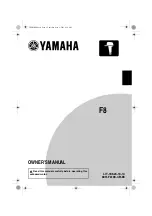
125
#include "system.h"
#include "altera_avalon_pio_regs.h"
int main()
{
printf("Hello from Nios II!\n");
int count = 0;
int delay;
while(1)
{
IOWR_ALTERA_AVALON_PIO_DATA(PIO_LED_BASE, count & 0x01);
delay = 0;
while(delay < 2000000)
{
delay++;
}
count++;
}
return 0;
}
2. Save the project.
3. Recompile the project by right-clicking
hello_world_0
in the NIOS II C/C++ Projects tab and
choosing
Run
>
Run As
>
Nios II Hardware
.
Note: You do not need to build the project manually; the Nios II IDE automatically re-builds the
program before downloading it to the FPGA.
4. Orient your development board so that you can observe LEDs blinking.
Summary of Contents for De0-Nano
Page 1: ...1 ...
Page 4: ...4 9 3 Revision History 155 9 4 Copyright Statement 155 ...
Page 44: ...44 Figure 6 5 Browse to find the location Figure 6 6 There is no need to test the driver ...
Page 90: ...90 Figure 7 14 Add NIOS II Processor ...
Page 93: ...93 Figure 7 17 Rename the CPU 1 Figure 7 18 Rename the CPU 2 ...
Page 98: ...98 Figure 7 23 Add On Chip Memory ...
Page 100: ...100 Figure 7 25 Update Total memory size ...
Page 102: ...102 Figure 7 28 Update CPU settings ...
Page 104: ...104 Figure 7 30 Add PIO ...
Page 106: ...106 Figure 7 32 PIO 21 Rename pio_0 to pio_led as shown in Figure 7 33 Figure 7 33 Rename PIO ...
Page 113: ...113 Figure 7 43 Input verilog Text Figure 7 44 Open DE0_NANO_SOPC v ...
Page 146: ...146 Figure 8 16 Display Progress and Result Information for the SDRAM Demonstration ...
Page 150: ...150 Figure 9 3 Select Devices Page ...
Page 151: ...151 Figure 9 4 Convert Programming Files Page ...















































